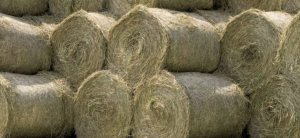 With drought conditions beginning to ease in many parts of the country, hay growers may have questions about whether to do a late fall mowing or just leave their fields alone until spring. An article in the newsletter published by the College of Agriculture at the University of Kentucky offered some tips.
With drought conditions beginning to ease in many parts of the country, hay growers may have questions about whether to do a late fall mowing or just leave their fields alone until spring. An article in the newsletter published by the College of Agriculture at the University of Kentucky offered some tips.
Unless sufficient rain has fallen, mowing mixed-grass hay fields in mid-fall won’t do much to stimulate regrowth. In fact, mowing dry fields will leave the soil exposed to the sun. As a result, further decreasing soil moisture and increasing stress on root systems. If weed growth is extreme, it might help to mow with the blades set high to clip seed heads before the seeds mature.
Some growth will occur in established hay fields after rain replenishes soil moisture. If enough growth occurs to make another hay harvest possible, schedule a late mowing toward the end of October. Mowing at this time will give plants a chance to accumulate post-mowing energy reserves. This is necessary for winter survival and vigorous growth in the spring.
In some circumstances where plant growth has been minimal because of the dry summer, a late fall mowing is not a good idea. One is in areas where soils are prone to frost heave. Another is when fields are covered with seedlings from a spring planting. In these cases, mowing may lead to more damage than leaving the fields with as much cover as possible.
Soil moisture, forage cover, and degree of drought stress will vary across hay-growing regions, so it is suggested that land owners get specific recommendations from local agricultural extension agents before making plans for fall management of hay fields. J & J Hay can help to answer these questions.
Source: Kentucky Equine Research
